Weekly Recap
Last week was another volatile week for the markets. On Monday, Trump announced 25% trade tariffs on Canada and Mexico, sending equity markets sharply lower and the USD higher. However, after some negotiation, a pause on those trade tariffs for 30 days was agreed upon, sparking a market recovery.
News that Trump implemented 10% trade tariffs on China was met with a measured retaliation from Beijing, suggesting that China was prepared to accept higher tariffs, at least for now. Although fears of escalating trade tensions could keep the market mood cautious.
On the data front, the US non-farm payroll report showed a mixed picture. 143k jobs were added in January, below the 170k forecast and down from 256k in December. The unemployment rate unexpectedly fell to 4% from 4.1%, highlighting the resilience of the US jobs market. The data supported the view that the Fed will most likely keep rates unchanged in the March meeting.
US stocks fell across the week following trade tariff developments, non-farm payroll data, and earnings from Alphabet and Amazon that didn’t match lofty expectations. The S&P 500 fell 0.25%, while the tech-heavy Nasdaq fell 0.5%. Meanwhile, the USD fell -0.3%.
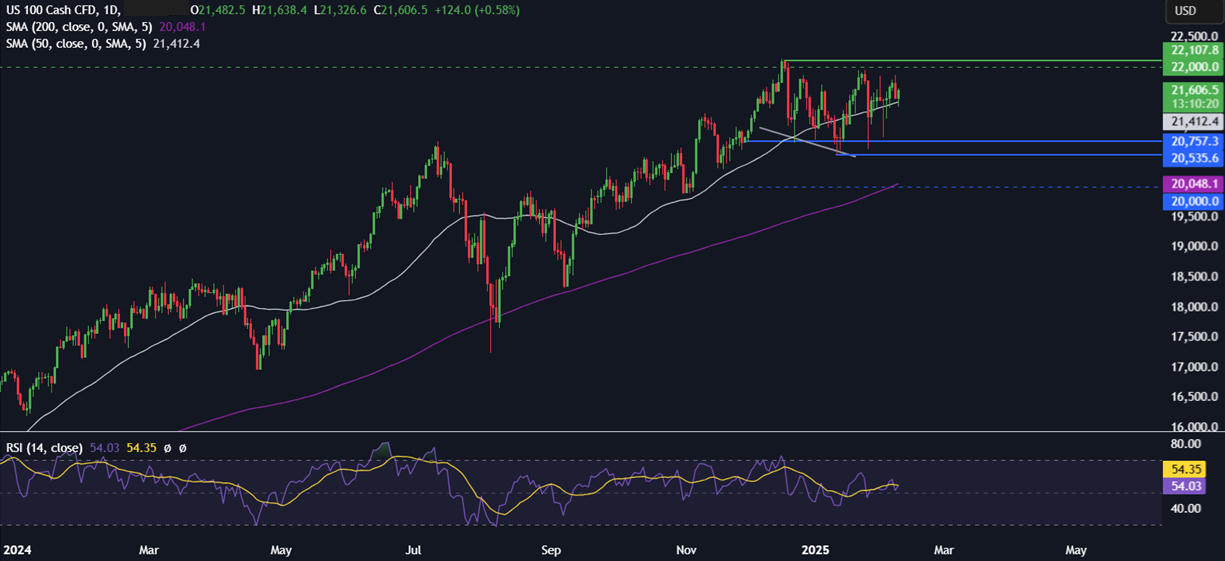
Trade tariffs
As the new week begins, President Trump has announced 25% trade tariffs on all steel and aluminum imports into the US on top of existing duties. He has promised more reciprocal tariffs on Tuesday and Wednesday. The market will be watching closely any developments surrounding trade tariffs, which would likely keep the market cautious.
Gold traded at a fresh all-time high at $2900 at the start of the week, boosted by safe-haven flows.
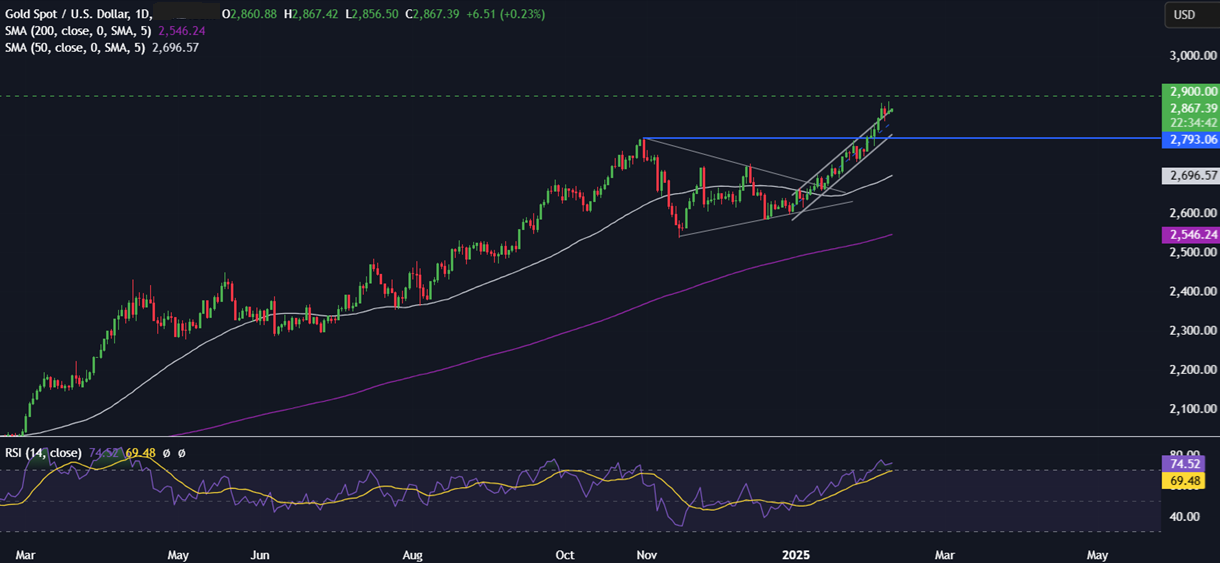
China CPI (Sunday)
Chinese consumer inflation accelerated to its fastest pace in five months in January whilst wholesale deflation persisted, reflecting mixed consumer spending and weak factory activity. The data over the weekend showed China’s CPI rose 0.5% year on year; however, the producer price index, which measures wholesale inflation, fell 2.3%. The data suggests deflationary pressures are likely to continue in China this year unless policymakers can spur on sluggish domestic demand. Consumer prices are expected to rise gradually, but producer prices are unlikely to return to positive territory anytime soon, given the overcapacity in the sector. Tariffs applied by U.S. President Trump on Chinese goods will likely add pressure on Beijing to boost growth in the world’s second-largest economy.
The Hang Seng has recovered in recent session trades at its highest level this year.
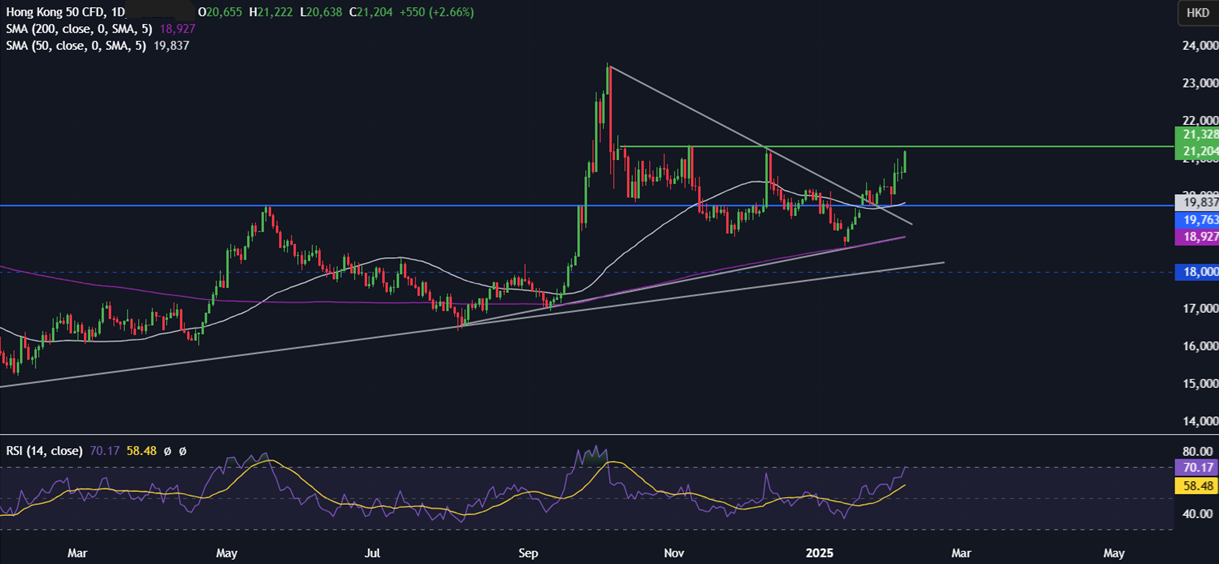
BoE Bailey speech (Tuesday)
Bank of England governor Andrew Bailey is due to speak on Tuesday. The market will be watching to see if he added anything to his comments last week following the rate decision.
The central bank cut rates by 25 basis points but also pointed to a stagflation outlook. Growth forecasts were halved to 0.75% for 2025, while inflation forecasts were lifted to 3.8%, up from 2.7% projected in November. This outlook puts pressure on GBP, which trades below 125.
More warnings from Bailey over the outlook for the UK economy could pull the pound lower. The market is pricing in three more rate cuts from the central bank this year.
GBP/USD will look to Bailey for further direction. A dovish-sounding Bailey could pull GBP lower.
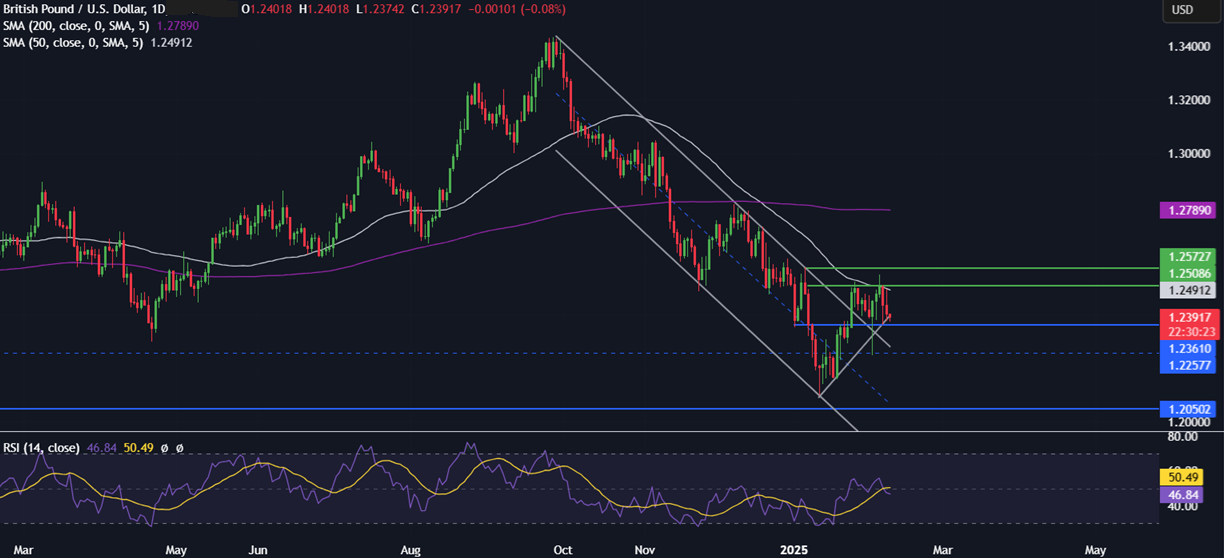
US CPI (Wednesday)
With inflation still above target, the Fed left interest rates steady at 4.25% to 4.5% in the January meeting. Fed Reserve chair Jerome Powell signaled there was no rush to cut rates until the data showed it was necessary. With this in mind and after the fall in unemployment, investors will watch US inflation data closely.
Inflation is still above targets, and the Fed seeks more evidence of disinflation before cutting rates. However, with tariffs, tax, and spending policies under Trump, there is some uncertainty over the inflation outlook. The market expects the next Fed rate cut to be in June. December CPI was 0.4%, while core CPI was 0.2%, suggesting underlying prices remained under control.
Expectations are for CPI and core CPI to be 0.3% in January, which could support expectations that the Fed will keep rates unchanged in the March meeting. Hot inflation could boost the USD against its major peers, while cooler CPI could pull the USD lower.
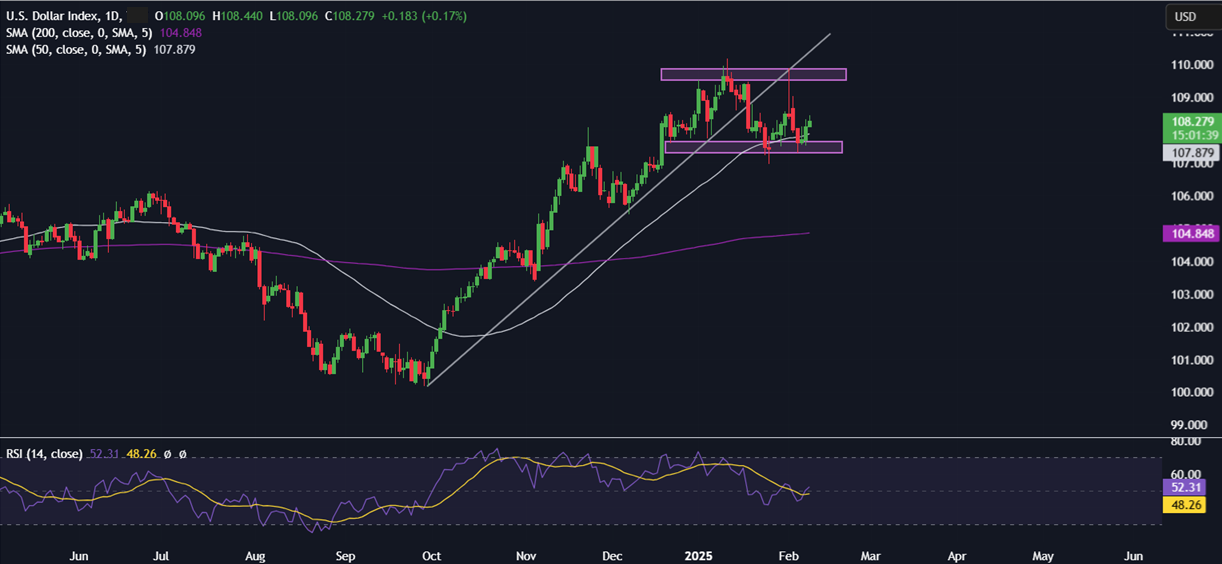
Powell speech (Tuesday & Wednesday)
Federal Reserve chair Jerome Powell will offer his semiannual testimony to lawmakers on Tuesday and Wednesday, where he will likely highlight the resilient economy as a key reason that the central bank is in no rush to cut borrowing costs further for now. With the economy in a good place, it gives the Fed time to assess the impacts of the new Trump administration’s policies on trade, immigration, and taxes. A hawkish-sounding fed chair, Powell, could boost the USD/JPY after recent weakness. The market is pricing two Fed rate cuts for 2025 per the updated Fed projections.
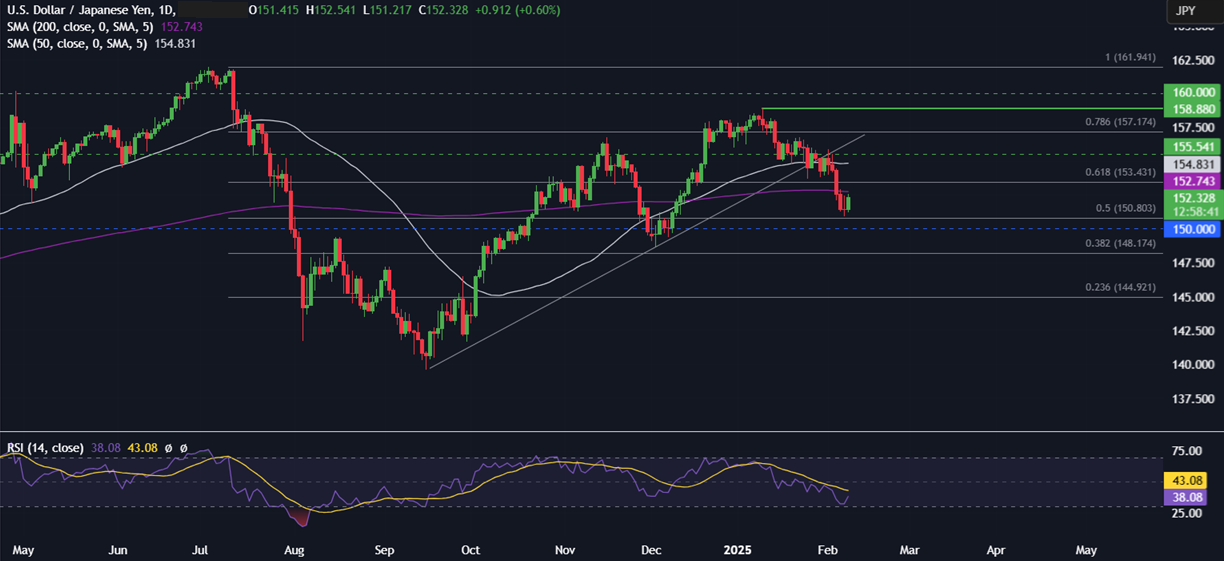
EZ GDP(Thursday)
Eurozone GDP data is due to be released and is expected to confirm that economic growth stalled in the last quarter of the year. While the economy returned to growth at the start of last year, 2024 ended in stagnation mode, and growth was negative in France and Germany.
Consumers continue to reel from the inflationary shock as increasing purchasing power is not yet translating into stronger consumption. Investment remains under pressure due to economic uncertainty and still high interest rates.
Weak growth is a concern at the ECB, which cut interest rates last week to 2.75%. Further weakness in growth could increase expectations of more ECB rate cuts, pulling EUR/USD towards 1.02.
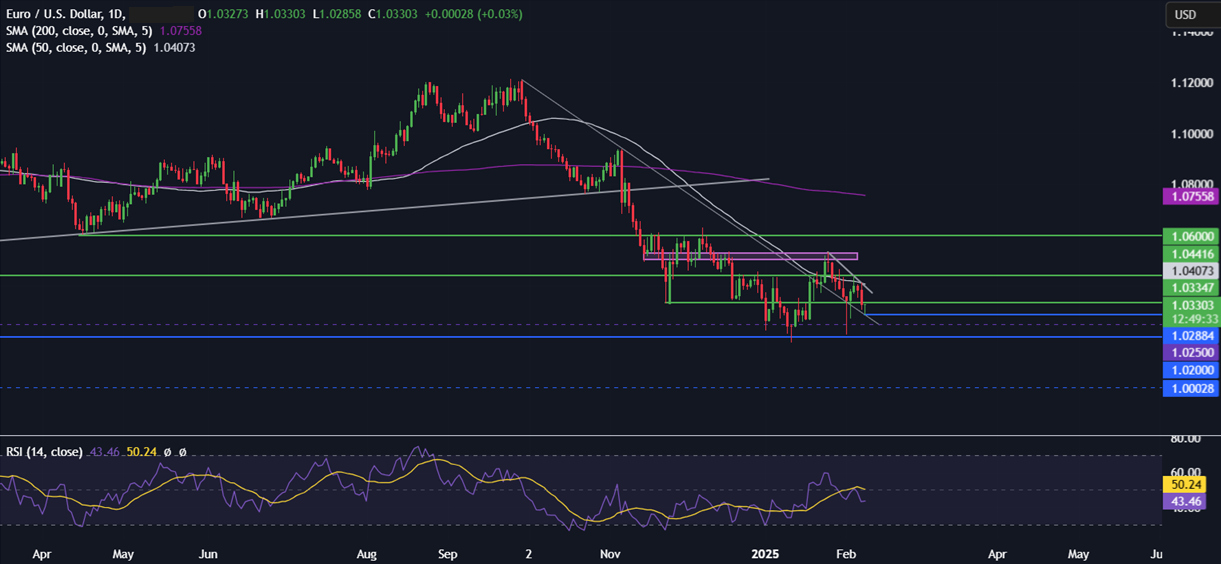
UK GDP (Thursday)
The UK economy grew 0.1% MoM in November after contracting 0.1% in both September and October, although this was below the 0.2% growth forecast. The UK economy continues to face the risk of stagflation after the Bank of England halved its 2025 growth estimate while forecasting sticky inflation above the 2% target. The BoE also warned of a possible shallow contraction in Q4 of 2024 and saw a 2 in 5 chance of a recession in early 2025. Weak GDP data could fuel BoE rate cut expectations.
The FTSE 100 rose to a record high last week on expectations that the BoE could cut rates further and amid a weaker GBP, a beneficial exchange rate to the multinationals that make up 80% of the index.
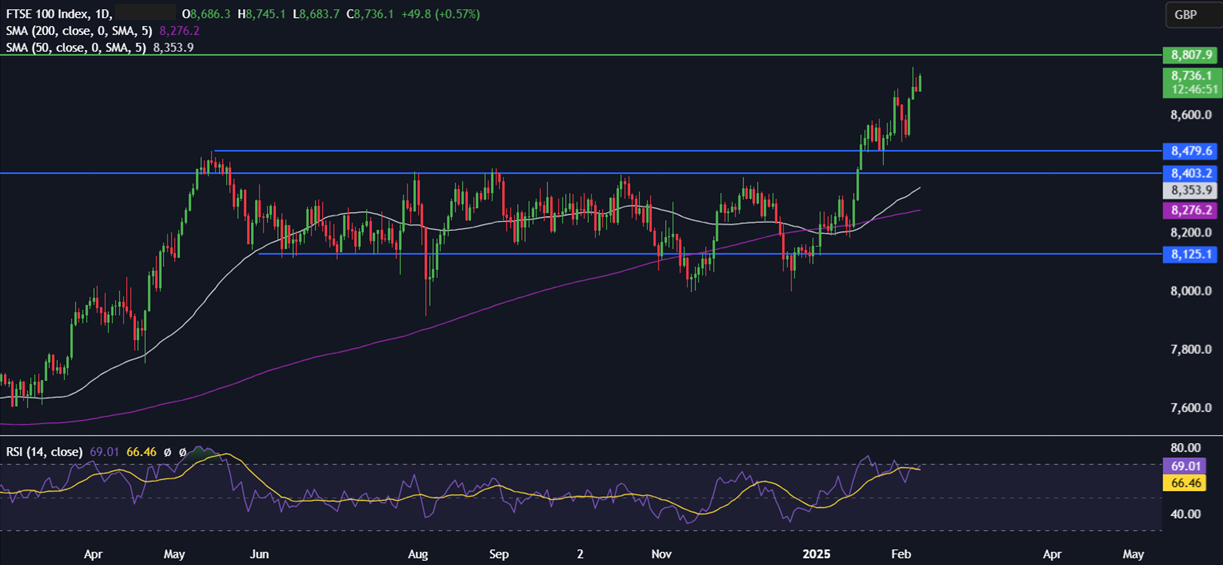
Retail sales (Friday)
Retail sales are expected to fall by 0.1% MoM after rising by 0.4% and 0.8% in the previous months. Consumer spending remains resilient and stable, which is to be expected given the Fed’s 100 basis point worth of cuts at the back end of 2024 and the solid jobs market.
While US consumer confidence has eased slightly in recent months, which could result in softer consumer spending, retail sales are not expected to ease much.
Weaker-than-expected retail sales data could help ease inflation worries and boost stock indices. The Dow Jones has fallen from its 45k level reached last week.
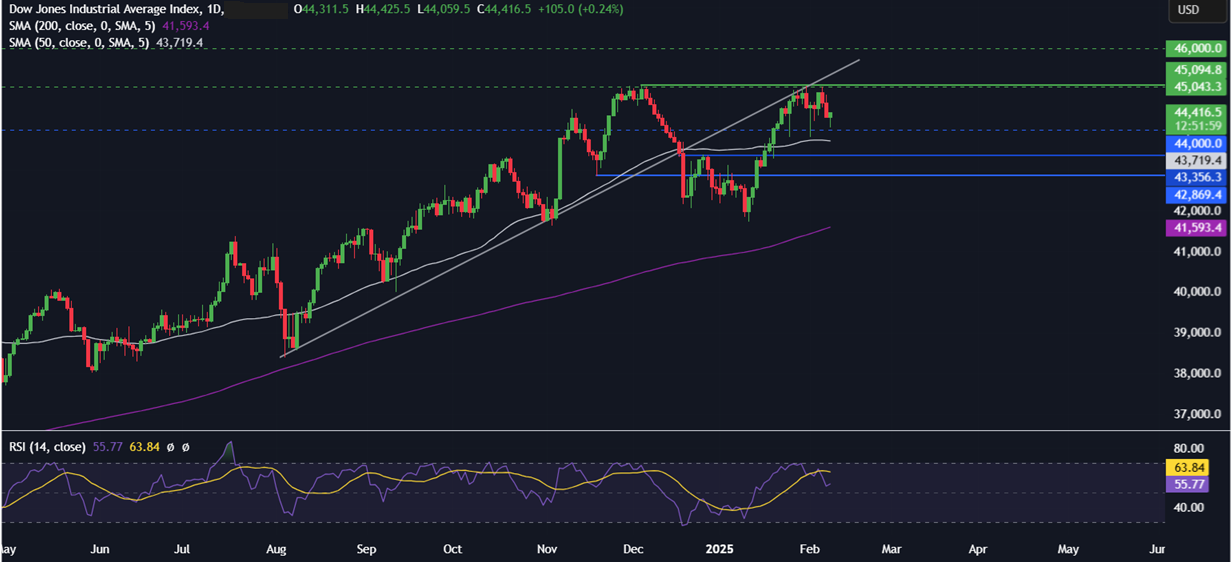
US earnings
Most of the Magnificent 7 have now reported earnings, except for NVIDIA, which is due to report on February 26. Of the 61% of the S&P 500 companies that have released results, 77% have beat expectations, showing that there has been continued momentum from the previous quarter’s earnings. This is supportive of stock indices, such as the S&P 500, even as other macro factors may be causing some headwinds.
This week’s earnings come from McDonald’s, Super Micro Devices, Coinbase, Lyft, and Airbnb as the reporting season enters its final stretch.
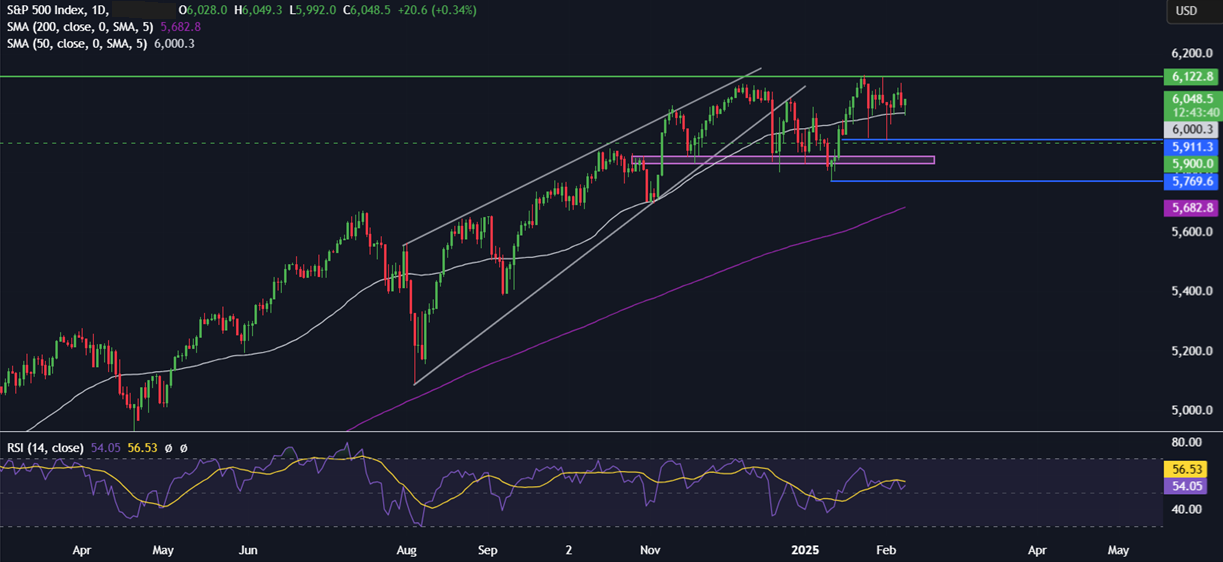
The content provided here is for informational purposes only. It is not intended as personal investment advice and does not constitute a solicitation or invitation to engage in any financial transactions, investments, or related activities. Past performance is not a reliable indicator of future results.
The financial products offered by the Company are complex and come with a high risk of losing money rapidly due to leverage. These products may not be suitable for all investors. Before engaging, you should consider whether you understand how these leveraged products work and whether you can afford the high risk of losing your money.
The Company does not accept clients from the Restricted Jurisdictions as indicated in our website/ T&C. Some services or products may not be available in your jurisdiction.
The applicable legal entity and its respective products and services depend on the client’s country of residence and the entity with which the client has established a contractual relationship during registration.




